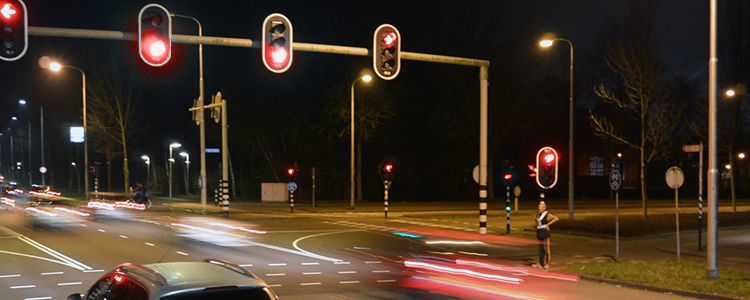Understanding Red Light Violations
Running a red light is a serious traffic offense that can lead to dangerous accidents and injuries. It occurs when a vehicle enters an intersection after the traffic signal has turned red. The consequences of running a red light can vary based on location, the circumstances of the violation, and whether the driver has prior offenses.
The Importance of Traffic Signals
Traffic signals are designed to regulate the flow of traffic and ensure the safety of all road users, including pedestrians. Ignoring these signals not only endangers the driver but also puts others at risk. According to the National Highway Traffic Safety Administration (NHTSA), red light running is a significant factor in urban crashes.
Cost of Running a Red Light Ticket
The cost of a ticket for running a red light can vary widely depending on several factors, including the state or municipality where the violation occurs, whether it is a first-time offense, and if there are any additional penalties. Below is a general overview of what you might expect in terms of fines:
| State | Average Fine | Additional Penalties |
|---|---|---|
| California | $100 – $500 | Points on driving record, traffic school |
| New York | $50 – $200 | Points on driving record |
| Texas | $200 – $500 | Points on driving record |
| Florida | $150 – $500 | Points on driving record, potential insurance increase |
| Illinois | $120 – $250 | Points on driving record |
Additional Costs
In addition to the base fine, running a red light can lead to other costs, including:
- Court Fees: If you contest the ticket and go to court, you may incur additional fees.
- Increased Insurance Premiums: Insurance companies may raise your rates if you have points on your driving record.
- Traffic School: Some jurisdictions may require you to attend traffic school, which can have its own costs.
Legal Consequences
Running a red light can also result in more severe legal consequences, especially if the violation leads to an accident. Possible repercussions include:
- Increased Fines: If you have prior violations, the fines may increase.
- License Suspension: In cases of repeated offenses, your driving privileges may be suspended.
- Criminal Charges: If running a red light results in injury or death, you may face criminal charges.
How to Avoid Running a Red Light
To prevent running a red light, consider the following tips:
- Stay Alert: Always be aware of your surroundings and the traffic signals.
- Follow Speed Limits: Adhering to speed limits gives you more time to react to changing signals.
- Use Caution at Intersections: Approach intersections with caution, especially if the light is yellow.
- Educate Yourself: Familiarize yourself with local traffic laws and regulations.
The Dangers of Running a Red Light
Running a red light can lead to severe consequences, not only for the driver but also for passengers, pedestrians, and other road users.
Statistics on Red Light Violations
- According to the Insurance Institute for Highway Safety (IIHS), in 2021, approximately 1,000 fatalities were attributed to red light running in the United States.
- The IIHS also reported that about 30% of all accidents at intersections are caused by red light violations.
- A study from the National Highway Traffic Safety Administration (NHTSA) found that more than 200,000 injuries occur each year due to red light running.
Real-Life Consequences
The consequences of running a red light can be devastating. Here are a few examples:
- Injuries and Fatalities: Collisions caused by red light running can result in serious injuries or fatalities for drivers, passengers, and pedestrians.
- Legal Repercussions: Drivers may face criminal charges if their actions lead to severe injuries or death. This can result in hefty fines, community service, or even jail time.
- Emotional Impact: The emotional toll of causing an accident can be significant, leading to guilt, anxiety, and stress for the driver involved.
How Red Light Cameras Work
Many cities have implemented red light cameras to deter violations. Here’s how they function:
- Detection: When a vehicle runs a red light, sensors detect the violation.
- Photography: The camera captures images of the vehicle, including the license plate.
- Ticket Issuance: A ticket is mailed to the vehicle owner, detailing the violation and associated fines.
Benefits of Red Light Cameras
- Increased Safety: Studies have shown that red light cameras can reduce the number of accidents at intersections.
- Deterrence: The presence of cameras serves as a deterrent for potential violators, encouraging safer driving behavior.
Criticisms of Red Light Cameras
Despite their benefits, red light cameras have faced criticism, including:
- Revenue Generation: Critics argue that the primary goal of red light cameras is to generate revenue for municipalities rather than improve safety.
- False Positives: There are concerns about the accuracy of the cameras, with some drivers claiming they were wrongly ticketed.
FAQs about Running a Red Light
1. What happens if I run a red light?
Running a red light typically results in a traffic ticket. If you cause an accident, you may also face civil liabilities and potential criminal charges.
2. Can I contest a red light ticket?
Yes, you can contest a red light ticket in court. It’s advisable to gather evidence, such as photographs or witness statements, to support your case.
3. How many points do I get for running a red light?
The number of points added to your driving record varies by state. Typically, it ranges from 2 to 4 points.
4. Will my insurance increase if I get a red light ticket?
Yes, your insurance premiums may increase if you receive a ticket for running a red light, as insurance companies view it as a risk factor.
5. Is there a way to get the ticket dismissed?
In some cases, attending traffic school can lead to the dismissal of the ticket. Check your local laws for options.
Conclusion
Running a red light is not only a traffic violation but also a serious safety concern. Understanding the potential costs, penalties, and legal consequences can help drivers make better choices on the road. By staying alert and following traffic signals, you can contribute to safer roadways for everyone.For more detailed information on traffic laws and regulations, you can visit the National Highway Traffic Safety Administration (NHTSA). This article provides a comprehensive overview of running a red light and its implications.
Read more about it:https://greyhoundsverdevalley.com/papa-louie-when-burgers-attack/



